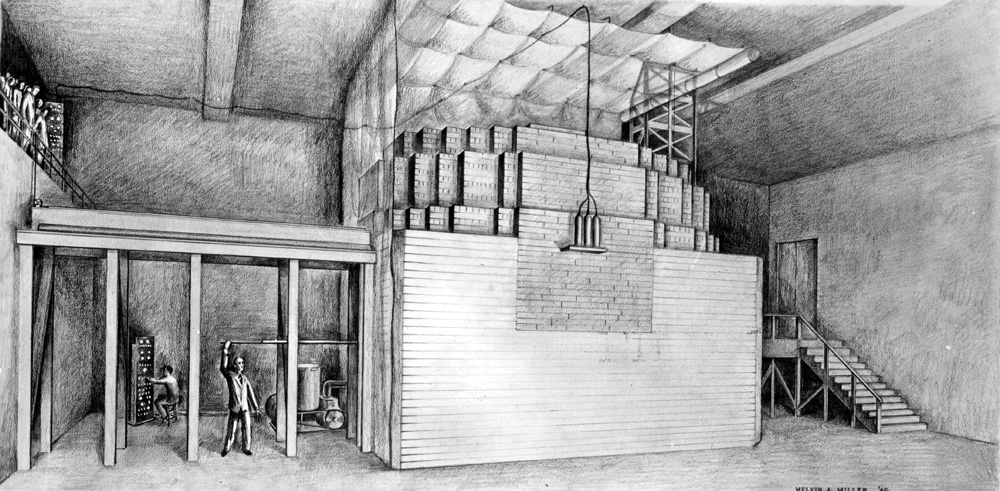
On December 2, 1942, UChicago scientists achieved the first self-sustaining, controlled nuclear chain reaction. The reactor, called Chicago Pile-1, was built in the squash courts beneath the west stands of the old Stagg Field. (UChicago Photographic Archive, apf2-00503, University of Chicago Library)
Remembering Chicago Pile-1.
When the world transformed 75 years ago this December, only a few people knew it. The pursuit of the first self-sustaining, controlled nuclear chain reaction had been a closely guarded secret on the UChicago campus, run under cover of the Metallurgical Laboratory as Enrico Fermi and his colleagues raced against Hitler’s physicists to unlock nuclear power.
As pure science, their achievement was astonishing. As applied science, of course, it was and remains an ambivalent milestone.
This fall the University of Chicago community is hosting and inviting public reflections on Chicago Pile-1 and its complex legacy, and so is the Magazine. The University’s commemorative series of events, Nuclear Reactions—1942: A Historic Breakthrough, an Uncertain Future, brings lectures and colloquia to campus as well as cultural events, including the premiere of an original composition by University Professor Augusta Read Thomas, “Plea for Peace,” during the culminating program December 1 and 2 at the Reynolds Club and the William Eckhardt Research Center. This program and most of the other events are free and open to the public.
The December 1 opening keynote address will be delivered by historian Richard Rhodes. Rhodes’s celebrated book The Making of the Atomic Bomb (Simon & Schuster, 1986) provided my education—and many of yours, no doubt—in the thread of science and world history for which December 2, 1942, was a pivotal marker. We are proud to publish a new essay by Rhodes here, on the uneasy relationship between the experiment’s two principal architects, Enrico Fermi and Leo Szilard (“Clashing Colleagues”). It illustrates how inseparable the thinking that pushes science forward is from the personalities—strengths and frailties alike—of the thinkers.
Fermi and Szilard were only two of hundreds whose curiosity, passion, and ingenuity created the chain reaction. In four short profiles we look at how Szilard and a handful of others with UChicago ties came to join the Manhattan Project and where their paths led. We then turn to four current faculty members who are grappling with the experiment’s repercussions today, from life-saving medical technology to life-threatening radiation exposure and risks of nuclear war (“Pioneers and Inheritors”).
The making of Henry Moore’s sculpture Nuclear Energy is the subject of “Elemental,” marking the 50th anniversary of its dedication on the site of the reaction. And in Inquiry, the publication of the Division of the Physical Sciences and a special section of this issue, the story “Manhattan’s Critical Moment” chronicles how the experiment proceeded on that consequential day.
